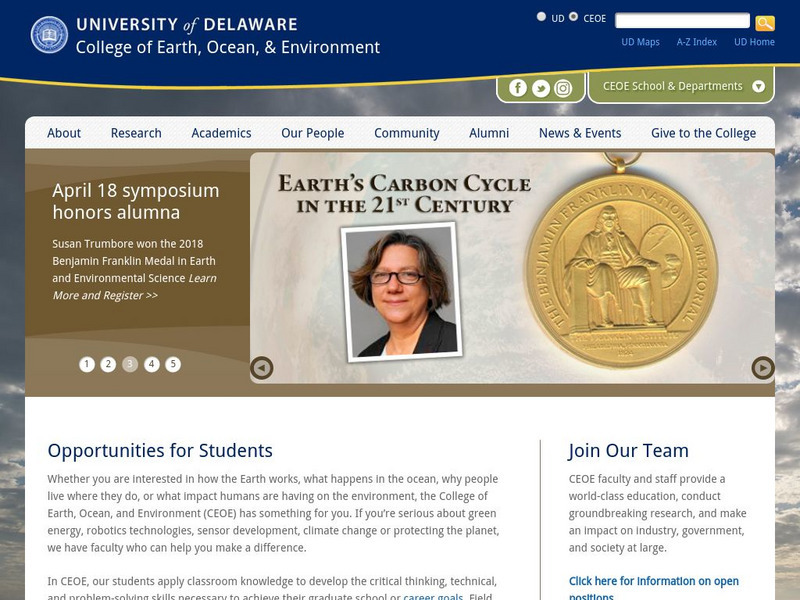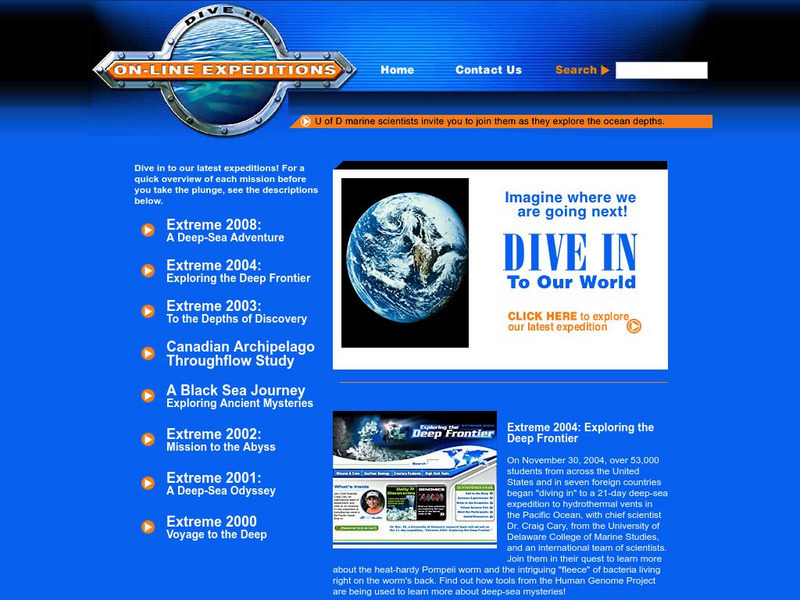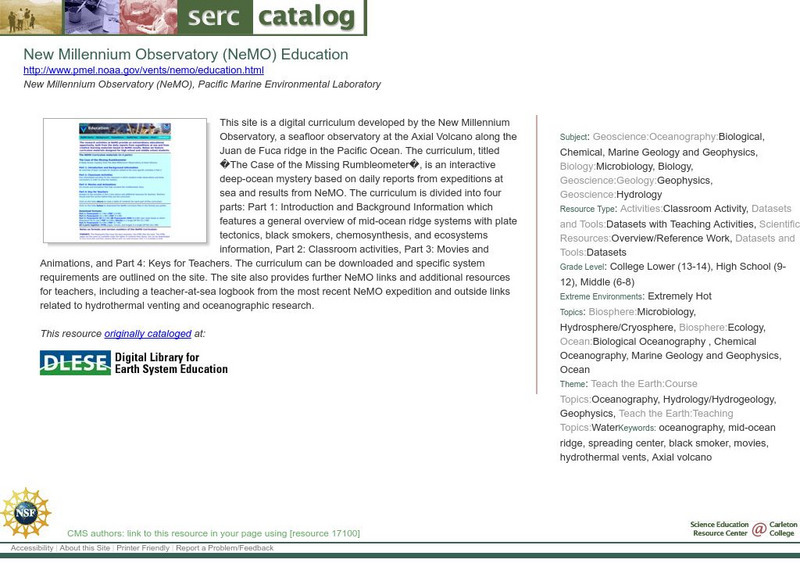American Museum of Natural History
American Museum of Natural History: O Logy: Journey to Deep Sea Vents
Take a submersible down to the seafloor. As you descend, passing through the ocean's sunlight, twilight, and midnight zones, you can observe how temperature, pressure, and light levels change. When your submersible reaches the seafloor,...
BBC
Bbc: New Marine Life Found in Deep Sea Vents
Six new animal species are identified at deep-sea vents beneath the Indian Ocean. Find out what new creatures are stirring in the sea.
Exploratorium
Exploratorium: Webcast: Live Deep Sea Exploration via E/v Nautilus
Oceanographer Dr. Bob Ballard is interviewed in a webcast to highlight the purpose and experiences of his deep sea explorations. Ballard has teams on a ship studying in the Mediterranean Sea and Atlantic Ocean researching hydrothermal...
American Museum of Natural History
American Museum of Natural History: Find a Vent
Learn all about hydrothermal vents deep in the ocean and how scientists locate them. Then take a virtual expedition to the Juan de Fuca Ridge in the north Pacific and see if you can discover a new deep sea vent.
NOAA
Noaa: Ocean Explorer: Sea Floor
This resource page has numerous links to pictures and videos of the sea floor. Topics include geologic features, habitats, bacteria mats and hydrates.
Other
University of Delaware: Chemosynthesis.
An explanation of how in the deep sea, where the sun's rays never reach, organisms make food from chemicals, a process called chemosynthesis.
Woods Hole Oceanographic Institution
Woods Hole Oceanography Institute: Vent Biology
Investigate nine different types of organisms that occupy deep-sea hydrothermal vents.
Science Education Resource Center at Carleton College
Serc: Aboard Alvin
This Gulf of Maine educational website takes students aboard the submersible Alvin. It includes informational pages such as a project overview, as well as pages about Alvin, hydrothermal vents, and the researchers involved in the...
Natural History Museum
Natural History Museum: The Oceans
This online exhibit from the Natural History Museum is home to ten units covering various aspects of the world's oceans including frozen oceans, deep oceans, barnacles, coral reef, deep-sea fish, sponges, vents, and more.
Smithsonian Institution
National Museum of Natural History: Ocean Planet
Detailed website that was a companion to a 1995 traveling exhibit of the Smithsonian. Links to lesson plans and other educational materials are at the bottom of the page. Enter the exhibition to explore the world of the ocean.
Science Struck
Science Struck: Interesting Facts About the Abyssal Zone
The Abyssal Zone lies deep in the ocean in the pelagic layer between 4,000 to 6,000 m or 13,000 to 19,500 ft. Learn about some of the unique life forms that call this zone their home, how they have adapted to the extreme pressure and...
Other
Voyage to the Deep: Vent Crab
Learn about vent crabs in this overview that includes a QuickTime video clip and several photos.
Other
Voyage to the Deep: Tubeworm
This is a very brief overview of tubeworms, a hydrothermal vent marine animal.
Other
University of Delaware: On Line Expeditions
Dive into the world of the deep sea with this website! Site includes information about the missions and discoveries made by the dive team as they explore deep sea hydrothermal vents.
Science Education Resource Center at Carleton College
Serc: New Millennium Observatory (Ne Mo) Education
This digital curriculum is an interactive deep-ocean mystery based on daily reports from expeditions at sea and results from NeMO and consists of four parts: Introduction and Background Information, Classroom activities, Movies and...










